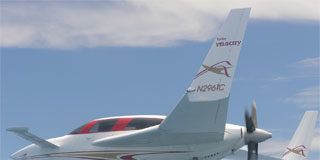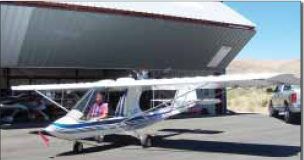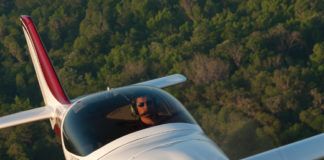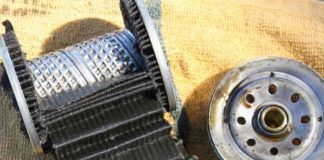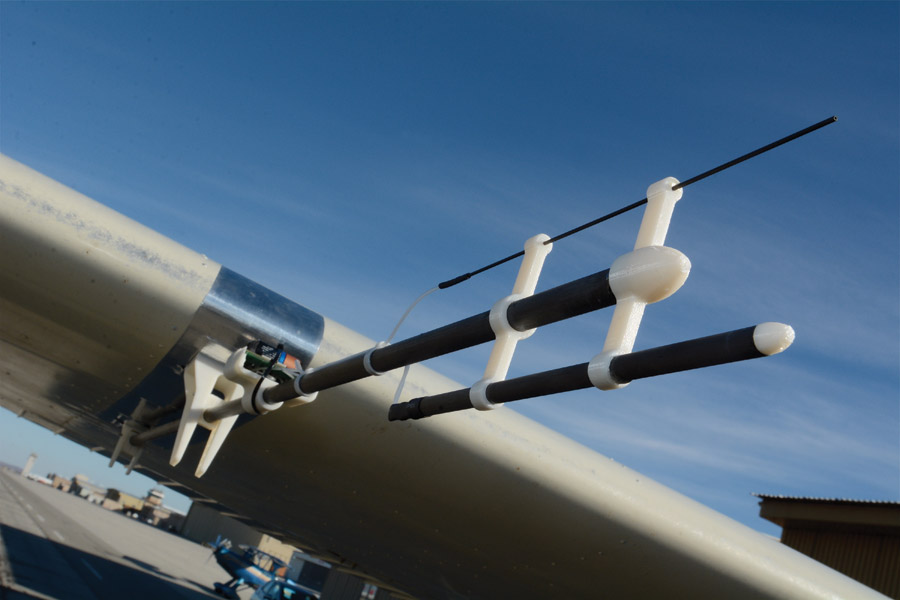
Instantly knowing airspeed to better than 2-knot accuracy makes quick work of calibrating airspeed indicators, establishing stall speeds, and extrapolating other performance standards.
Every time we get depressed thinking Experimental aviation is going gray and cookie cutter, we hop in the box kite and head to Mojave where the atmosphere is hot with innovation and enthusiasm for everything flyable. That’s because Scaled Composites, the associated Stratolaunch Systems, Virgin Galactic, Orbital ATK, Masten Space Systems, and the National Test Pilot School are on the field, so there’s always a squad of young Turks on patrol. And the young dudes always have something new in their backpacks.
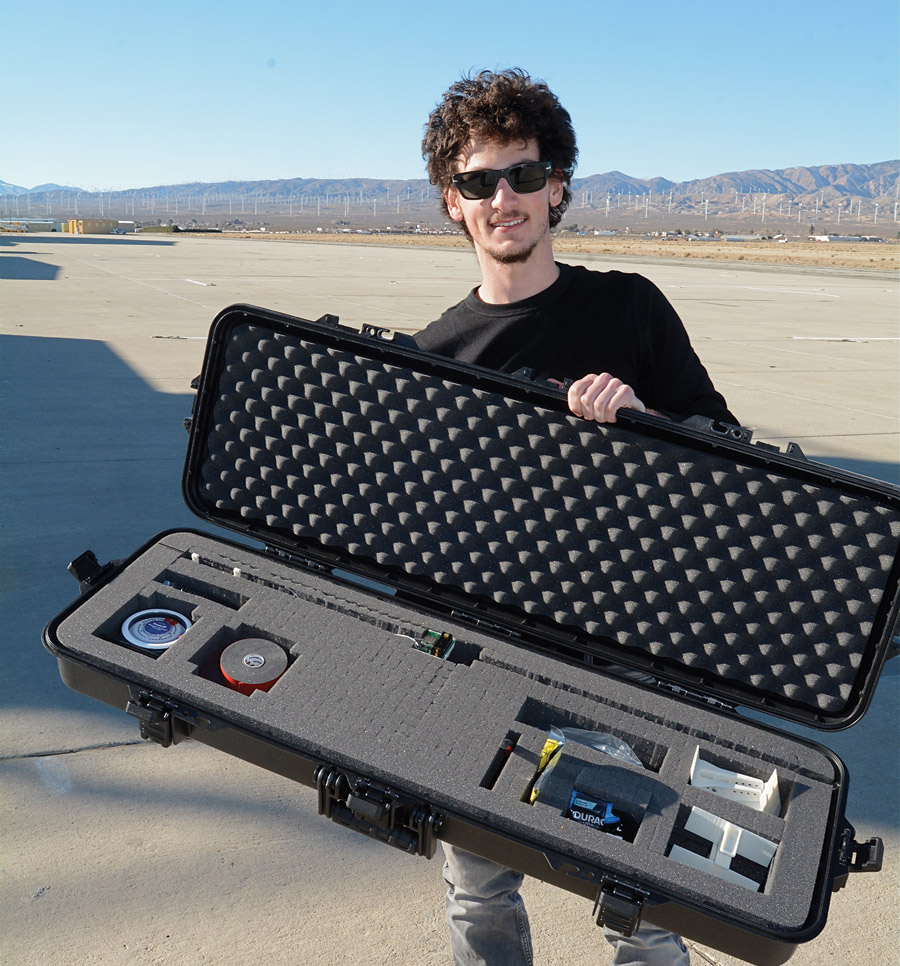
Andrew Angellotti holds his air data probe traveling kit on the Mojave ramp. Everything from the probe to mounting tape is here, ready to attach to any conceivable airfoil.
So, we had barely unwrapped our scarf when we were introduced to Andrew Angellotti, one of the newer Mojave guys. Free thinking, restless for the shop, and with a millennial’s native facility with electronics, Andrew has developed an air data probe that is accurate to a knot and half, portable as cash, user friendly in the extreme, and, should he put it in production, affordable enough that regular Joe’s can aspire to it.
True to its modern provenance, Andrew’s air data probe is the marriage of 3D printing and a custom circuit board. So far he’s developed two versions. The first is a five-hole design yielding airspeed, altitude, angle of attack, and angle of sideslip. Realizing not everyone needs that much information and might just want to calibrate the airspeed indicator in their new RV-8, Andrew developed a simplified 1-hole version that’s easier and less expensive to build.
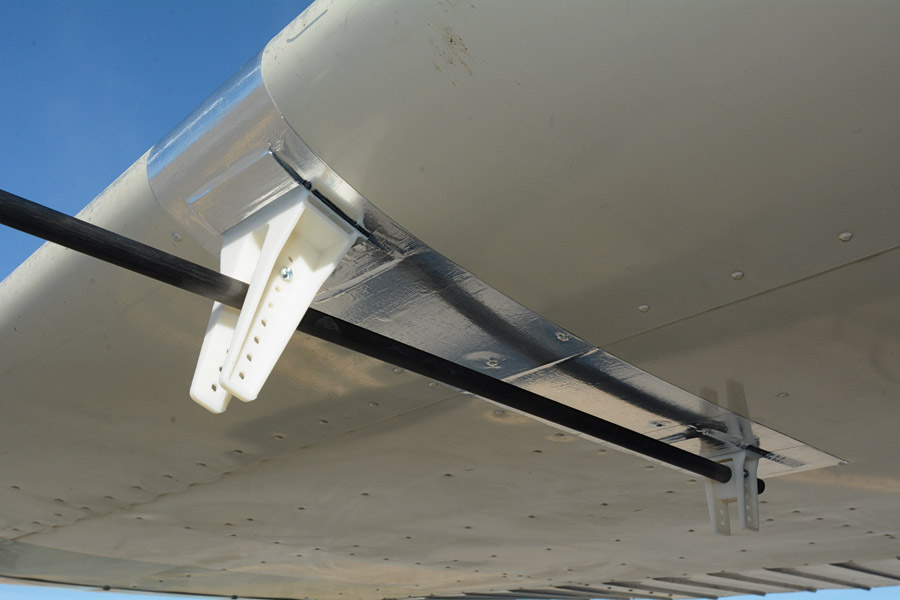
Aluminum tape is the foundation behind the air probe’s mounting—beware flaky paint! Two-sided tape under the pair of adjustable bracket mounts allows quick eyeball leveling of the “stick” and more aluminum tape secures the mounts to the foundation tape. Andrew gives each installation a 20G pull test with his digital fish scale and reports testing to 245 knots with stick raps didn’t budge the installation on a Lancair.
In either five- or one-hole version, Andrew’s air data probe opens new doors to builders looking for fast, accurate airspeed information. The probe replaces tedious, narrowly focused flight tests with near instant information. And while a typical builder may need the probe only briefly during initial phase flight testing, the probe mounts to almost any wing so quickly that it’s easy to envision an EAA chapter or a local specialist keeping one handy for an extended group of builders and technicians.
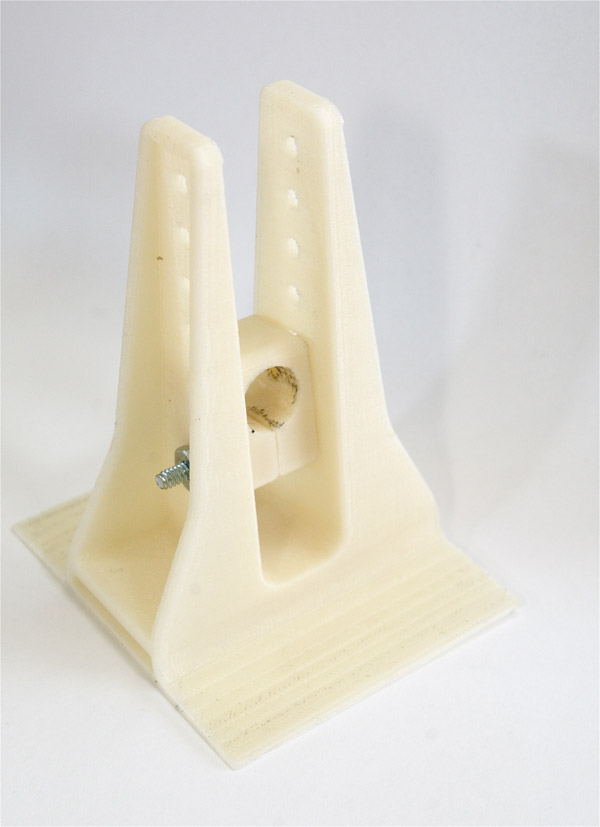
Easily generated in a 3D printer, the mounting brackets are two-piece units: the main stand and a pinch block between the forks. Stepping the stand’s base gives it flexibility to easily conform to airfoil shapes.
Several concepts and technologies enable this new data probe. If nothing else, inexpensive 3D printing sidesteps machining or casting to lower costs. Whittling all this out of aluminum would definitely be dear.
Andrew also specifically avoided wires—there isn’t a single wire in the entire system—making the probe a cinch to install or move from one plane to the next because it radios data from a circuit board on the probe to a laptop-mounted receiver dongle. He also chose a robust 2.4-GHz mesh routing radio interface in lieu of finicky WiFi or Bluetooth protocols.
Andrew first sketched the probe’s circuit board layout in an Oshkosh coffee shop last summer. “I had the time off work so I thought I would do something useful,” he explained. And to think we were simultaneously fully engaged by pitching a tent. By August the circuit board was printed, and the device made its first flight last September on a Piper Cub.
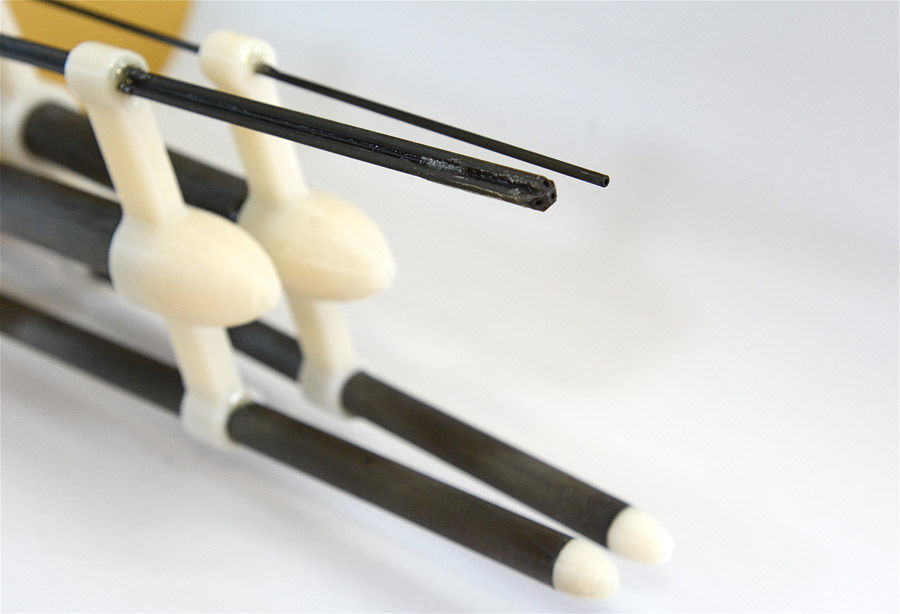
The five-hole probe (front) bundles five tubes with a carefully beveled leading edge; the 1-hole unit (rear) uses a simple single tube. Andrew has found hole diameter consistency is not critical as variations are accounted for in his calibration of the assembly, but keeping the five-hole’s bevel symmetrical does matter.
At first he was discouraged because “the numbers were bouncing around.” Coaching from test pilot Elliot Seguin soon had Andrew seeing the benefit of flying controlled, concentrated test flights to isolate issues, and then the data quickly started coming together as the few developmental issues were solved. More help came from Dustin Mosher who brought much-needed piloting skills to the project. “Now all calibration flights are done to cards,” says Andrew, who still needs to initially calibrate each probe and its circuit board as part of manufacturing.
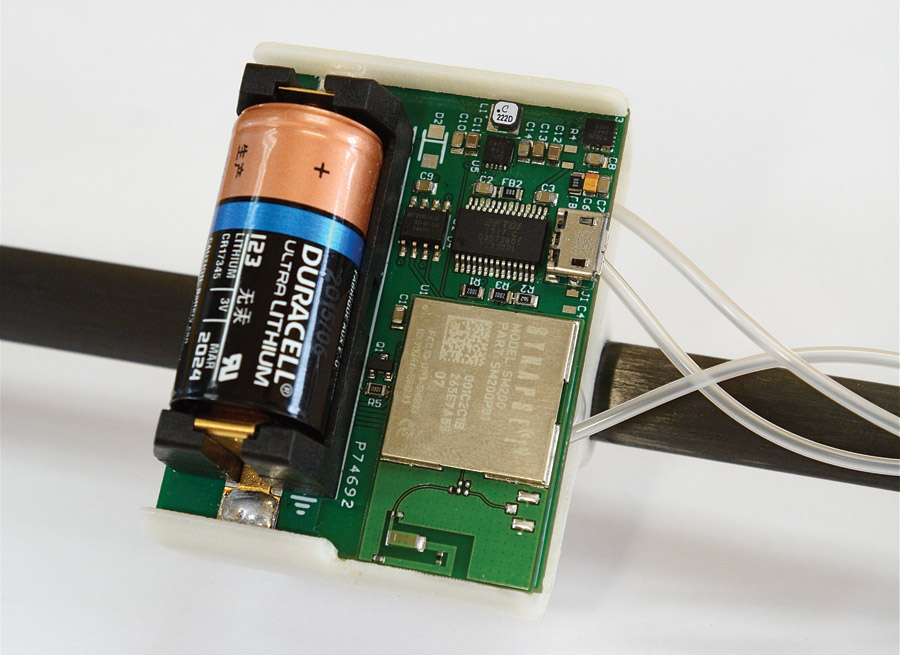
Andrew designed his circuit board to hold the battery, a power supply to regulate voltage, a 2.4-GHz transmitter, accelerometer, local memory, a USB port (just because…), and one absolute and three differential pressure transducers. Each board and probes are calibrated by Andrew and are thus matched sets.
So, what can an air data probe do for you? Pitot/static calibration is the first builder’s conundrum this thing can solve. No more four-heading GPS calibration flights or tower fly-bys. For anyone routinely making first flights, this stick would save a ton of time.

Open as a convenience store, Andrew’s air probe doesn’t bother with a cover for the electronics or even an on-off switch. Press the battery in place and it’s running; a zip tie provides security. The clear tubes carrying air pressure to the transducers are easily seen here.
Level acceleration is also obtained with off-handed ease by the probe. From such data, best climb, best glide, and other numbers can be derived with a little math. This can be done on any airplane in 15 minutes of testing says Andrew, so if you didn’t have any data collection, this is a big step forward.
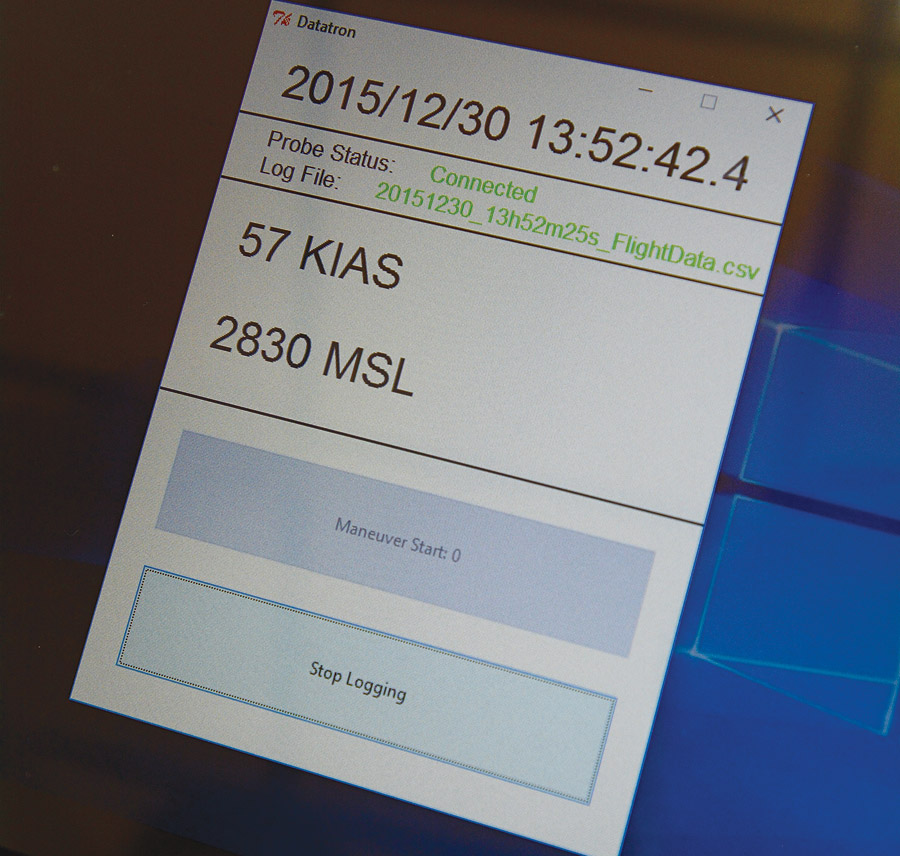
Experience has taught Andrew that tiny type fonts and information overload are undesirable in flight, so this simple window is all his proprietary software displays during data acquisition. It works well in direct sunlight and turbulence.
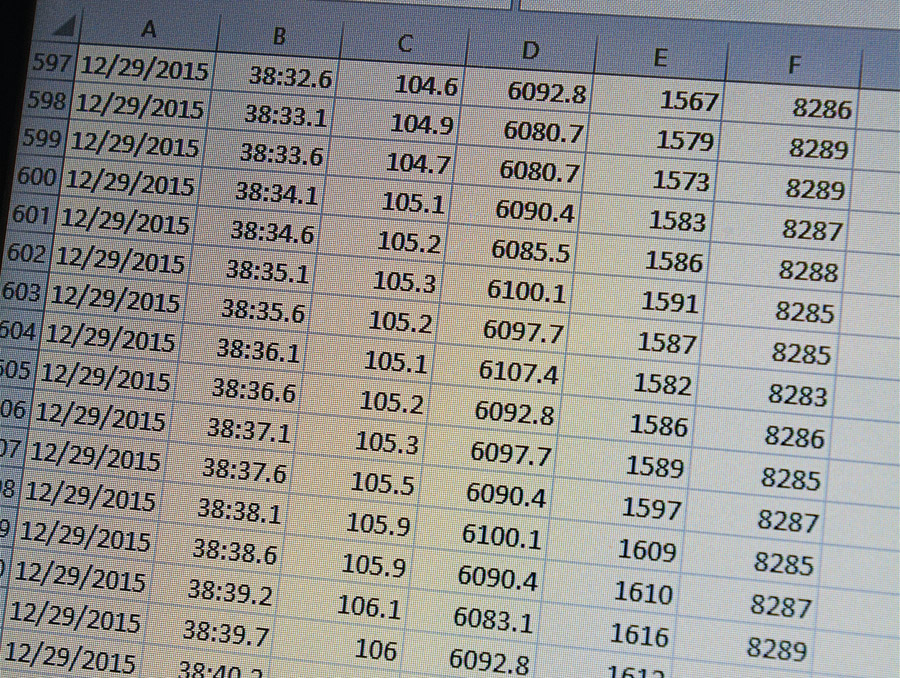
Once a data file is logged in Andrew’s software, it will open directly in Excel or other common PC spreadsheet programs. From left the columns are date, time, KIAS, altitude MSL, Vraw, and Araw.
Given the five-hole probe, a stall series with different deceleration rates can capture the maximum G (there is an accelerometer on the probe), altitude lost, and other useful data.
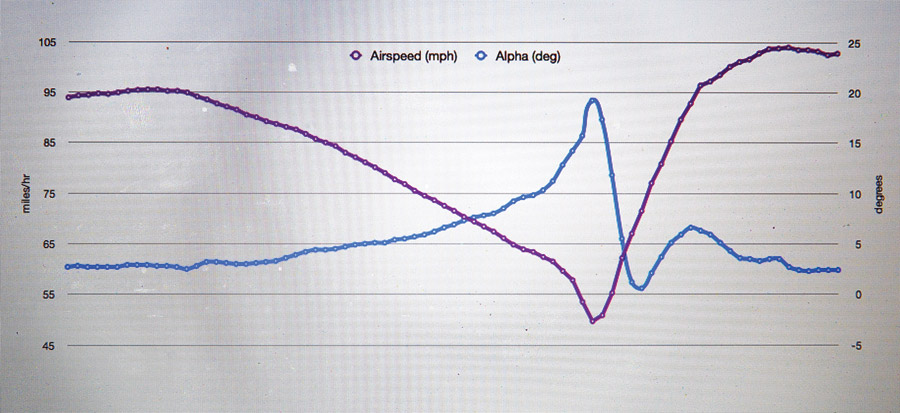
Of course, once in a spreadsheet any sort of graph can be generated. This simple airspeed vs. angle of attack (Alpha in test pilot speak) graph was generated from data taken by a one-hole probe.
Unfortunately the bit we can’t report on is if, when, or how much for the probe itself. Andrew originally built the probe for his and his friend’s personal test piloting, but the interest the probe has generated has him considering production. Pricing is thus in the future, but we’d venture two standard boating units is the right ballpark for the five-hole probe. Given the growing sophistication of amateur building, plus the current push to increase E/A-B safety, Andrew’s trick stick seems an idea whose time has come.

